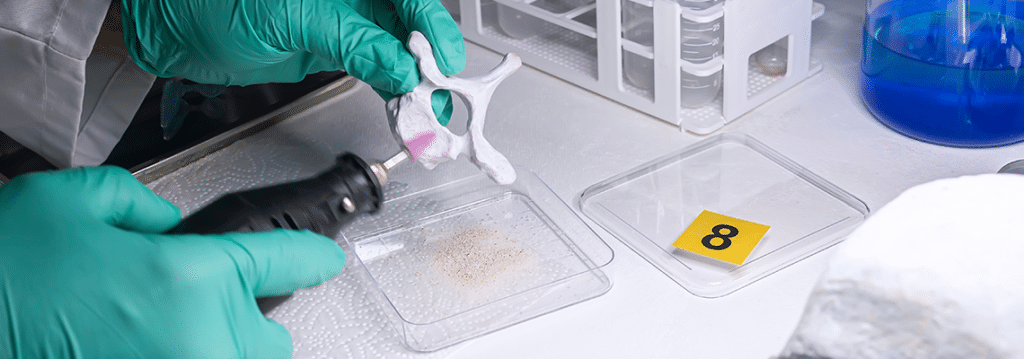RIP makers generate more complete genetic profiles from terrorism and other crimes
June 8, 2018
In the case of IEDs, terrorism investigators struggle to obtain a high-quality genetic profile of a suspect. Often only a low-template or degraded DNA sample can be collected. But according to a recent study, the InnoTyper 21 kit empowers forensics labs to bring these criminals to justice. In one of the first studies to focus on DNA from post-blast IED debris, researchers found that the kit, which relies on shorter genomic targets than traditional STR analysis, successfully obtains results.
In these cases, recovering suspect DNA is difficult for several reasons. During assembly or device placement, typically only a few cells are transferred—such as by touching the surface of the device or pricking a finger on a wire. After explosion, only trace quantities or low-template DNA can be recovered. These samples often can’t be amplified, or stochastic effects such as locus drop-out lead to genetic profiles that are low-quality or incomplete.
“The ability to recover and genotype DNA from such weapons may be vital in the effort to identify suspects associated with these devices,” according to a team of forensic and genetic researchers from Sam Houston State University and the University of North Texas Health Science Center. To investigate the effectiveness of three solutions, Tasker et al. constructed and detonated pipe bombs spiked with biological material. They compared analysis using short tandem repeat markers (STRs), single nucleotide polymorphisms (SNPs), and retrotransposon insertion polymorphisms (RIPs).
For the RIP analysis, the researchers used InnoGenomics’ InnoTyper 21 Kit, a high copy number Alu based system. Utilizing a novel “mini-primer” design to position Alu primers at the junction of the insertion sites, InnoTyper 21 allows for the detection of RIP markers while reducing the size of the targeted sequence. The multiplexed marker system includes 20 autosomal RIP markers and amelogenin for sex determination. It has a maximum output of 42 alleles (full genetic profile).
The researchers found that RIP markers resulted in significantly more complete genetic profiles. The results were published in “Analysis of DNA from post-blast pipe bomb fragments for identification and determination of ancestry” in the May 2017 issue of Forensic Science International: Genetics.
“DNA samples recovered from post-blast pipe bomb fragments showed significantly more complete genetic profiles when amplified with the INNULs than with the STR markers (p < 0.001),” wrote Tasker et al. INNULs, is short for insertion/null, an alternate term for RIPs. Out of 25 samples, 17 RIP-amplified samples had more than 80% of alleles reported.
“These results suggest that INNUL analysis may be well suited for low-template and/or degraded DNA samples, and may be used to supplement incomplete or failed STR analysis,” according to the study. The use of these markers makes the InnoTyper 21 kit more effective at analyzing degraded or compromised DNA.
The success stems from the smaller size of the kit’s targeted sequence, compared to STR analysis. Because these shorter targets are more likely to resist stochastic effects, the kit serves as a potent tool for DNA amplification.
The InnoTyper 21 kit’s high discrimination power (approximately 1 in 100 million) and its use as a forensic tool allows the analysis of highly degraded forensic samples without the use of mtDNA sequencing—while still utilizing existing PCR/CE platforms. The research team noted that this alignment with existing lab workflows is another major benefit. “Because the InnoTyper 21 workflow is akin to STR analysis, INNUL analysis could be implemented in crime laboratories without requiring new equipment or software,” according to the study.
If your lab investigates crime involving IEDs, or otherwise works with highly compromised or degraded DNA samples, contact us today to order InnoTyper 21.
To be notified about InnoGenomics’ upcoming validation publications

